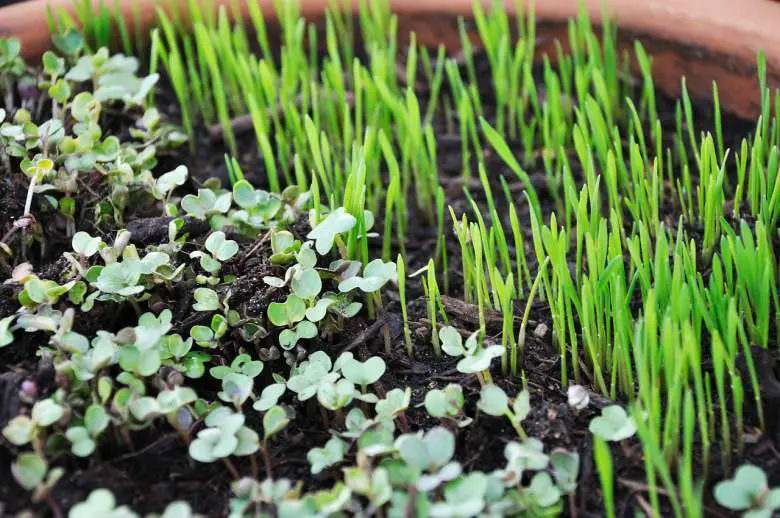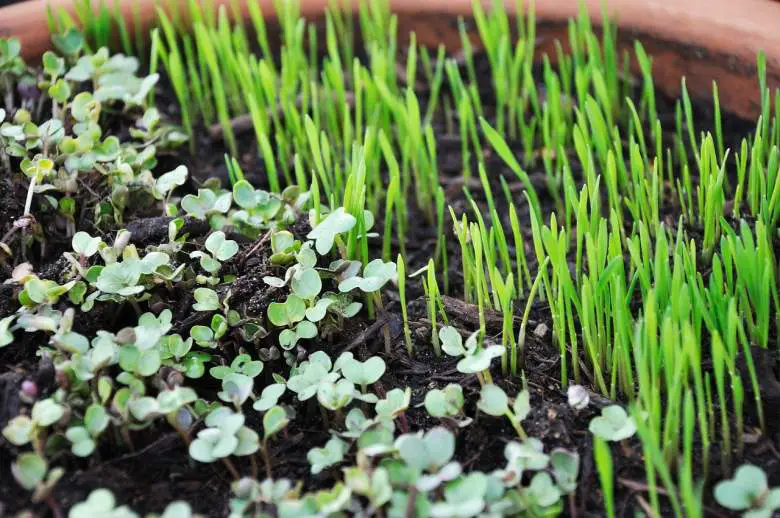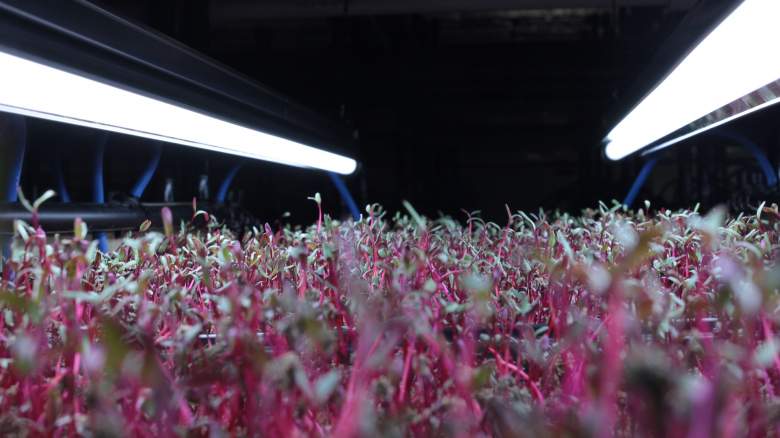One of the current trends for healthy crops you can grow from home is Microgreens. Aquaponic and hydroponic gardeners turn to these, as the growing methods are near what they are used to carrying out.
Growing microgreens is relatively easy. They take very little time compared to conventional crops. With this, the question is often asked. What are the reasons why microgreens are expensive? Because every harvest of these young plants requires fresh soil or clean sterilized growing mats and trays, microgreens are expensive.
Growers need artificial lighting, fans, or climate control equipment to create a microgreens-friendly atmosphere. Microgreens produce less biomass per square foot (less plant weight) than typical crops, even with this equipment. As a result, microgreens are typically more expensive than other vegetables seen in grocery stores.
What Are Microgreens?
Microgreens are immature vegetables harvested when they are between one and three inches tall, usually after a week or two. The delicate texture, powerful flavor, and vivid color of these tiny greens make them great garnishes and salad toppings.
Microgreens are nutritional powerhouses, providing the same vitamins and minerals as full-sized vegetables and herbs in a fraction of the size. These tiny, year-round greens are straightforward to grow in confined, indoor spaces, making them a popular choice for urban farmers or gardeners with aquaponics systems and looking to optimize space.
Microgreen examples
- Collard Greens
- Red Cabbage
- Watercress
- Beet Greens
- Spinach
- Kale
- Swiss Chard
- Bok Choy
- Lettuces
- Arugula
How Do You Grow Microgreens?
One reason microgreens are expensive is the way they are grown. While it is a relatively straightforward process, it is quite involved in certain growth cycle stages.
Even in the most basic form of growing, there is some equipment you need.
- Seeds
- Growing Trays and Growing Mats
- Spray bottles
- Clean water
- Scales and measuring jugs
Seeds
Seeds are the principal thing you need and lots of them. Microgreen seeds are also different from regular seeds as they offer a higher germination rate.
Trays
Growers can use various trays or containers that come in any shape and size, although specific trays are used when microgreens are grown for profit.
Typically, level trays are best for growing microgreens, and when you harvest, you can trim across the tops of the edges as your guide.
Trays require sterilization between growing sessions, so it could be the case of having two sets of equipment to avoid any growing interruptions.
Growing Medium Or Mats
Trays need soaking before you fill them with your seeds. Along with providing water and nutrition, it helps the seeds stick to the mats. Depending on the media or mat in use, these may need disposing of, or cleaning and sterilizing before repeat use.
If you use earth or other organic growing media, it will need composting or disposing of.
Key Reasons Why Microgreens are so Expensive
Besides mats, media, and seeds, there are more significant reasons why microgreens are expensive.
Here are areas that skyrocket the cost of these micro wonders.
Location
Because of the nature of microgreens, you can’t grow them outside in conventional growing conditions. Many gardeners use a greenhouse or another area of their home where they carry out their growing.
Since the microgreens don’t grow higher than a few inches tall, they are often grown on racking or shelving units to maximize vertical space.
These setups have one thing in common: they are all enclosed environments with controls on temperature, humidity, and any other variables that could face crops out in the open. The most significant characteristic from a location viewpoint is the crops are shielded from external influences and pests.
Power
Microgreens can be grown in greenhouses, and when done so, they get the benefit of natural light. However, many microgreen gardens don’t access natural light and use grow lights for maximum lighting periods.
Besides this, you can find temperatures are controlled at optimum levels, as is airflow. Fans continually blow air around the microgreen’s environments. One of the main reasons for all this is to control humidity. High levels of humidity can harm your crops as they grow so close together.
The airflow and temperature help stop fungal growth, yet they need lots of electricity to operate.
Labor
Taking care of microgreens takes more timing and accuracy than it takes working hard in a garden or tending to a hydroponic or aquaponic garden.
The amount of effort is less as there isn’t heavy lifting, although you have to do things in specific steps and at certain times. To ensure no crop failures, you have to complete each step of the short growing cycle on time exactly.
Your rhythm and precision will dictate the crop’s success or failure. This is true for most crops regardless of how you grow them, yet it is more vital for microgreens.
Nearly all types of microgreen crops will be sown and harvested in less than ten days. Every step you take can keep you in a routine each day Each step, and frequently each day requires you to be on the ball and exactly as you could quickly affect all your crops.
For instance, when you are in the germination phase, you need to know the exact amount of seeds to sow and ensure they are dispersed across the growth mats. With this, the mats and trays must have the precise amount of water for germination.
After this, seeds are placed in dark areas and weighted down, for example, to help stimulate strong development at the base instead of reaching for the light prematurely. It is your job as the grower to act as a surrogate mother to your seeds and make sure they get the best first few days of germination that allows them to grow strong until it comes to harvest.
Keeping the hundreds and thousands of seeds warm and moist can be a repetitive challenge before you reach harvest time.
Harvesting is a manual process, and there is little other way to harvest microgreens than using a sharp pair of scissors. After harvest, there isn’t much chance to regrow from the stems and roots as a fresh batch can grow faster.
Once harvested, all the cut stems need washing, and then it is the task of sterilizing and cleaning your trays before you get them ready to use again.
Beyond this, the shelf life of microgreens may not be anywhere near as long as full-grown vegetables.
Read more: The Growing Cycle Of Microgreens
Why Economics Make Microgreens Expensive?
All the above are the key physical reasons microgreens command a higher price compared to regular vegetables.
When you compare the numbers of seeds you grow, you will produce the equivalent of years’ worth of crops in one shot.
As much as you do, it isn’t only the reasons above that lead to high prices.
Economics leads to such high prices, and currently, there isn’t anything growers can do to change this.
Microgreens Are On An Upward Trend
The fact microgreens are the trendiest thing going is among the top reasons they are so pricey. Regular veggies can be grown and bought anywhere. Microgreens are around two decades old, despite that, few people or growers understand them.
Initially, they were garnishments for fancy restaurants, yet their nutritional benefits were recognized, and they started hitting the mainstream.
You can easily see why commercial growers and retailers are taking scarcity to hike up the price.
Microgreens Are Healthy
If you have a basic understanding of nutrition, you’ll know that society is edging towards a healthier range of foods. Most foods that contain nutritional elements are costlier than other types of foods.
Microgreens are among the most expensive foods available as, compared to size and portion, they are far healthier than the crops they would grow into. Microgreens can be up to 50% more nutrient-dense than a full-grown crop.
Microgreens will command higher prices than full-size veggies in a society, which values healthy eating and is more than willing to pay for the privilege.





